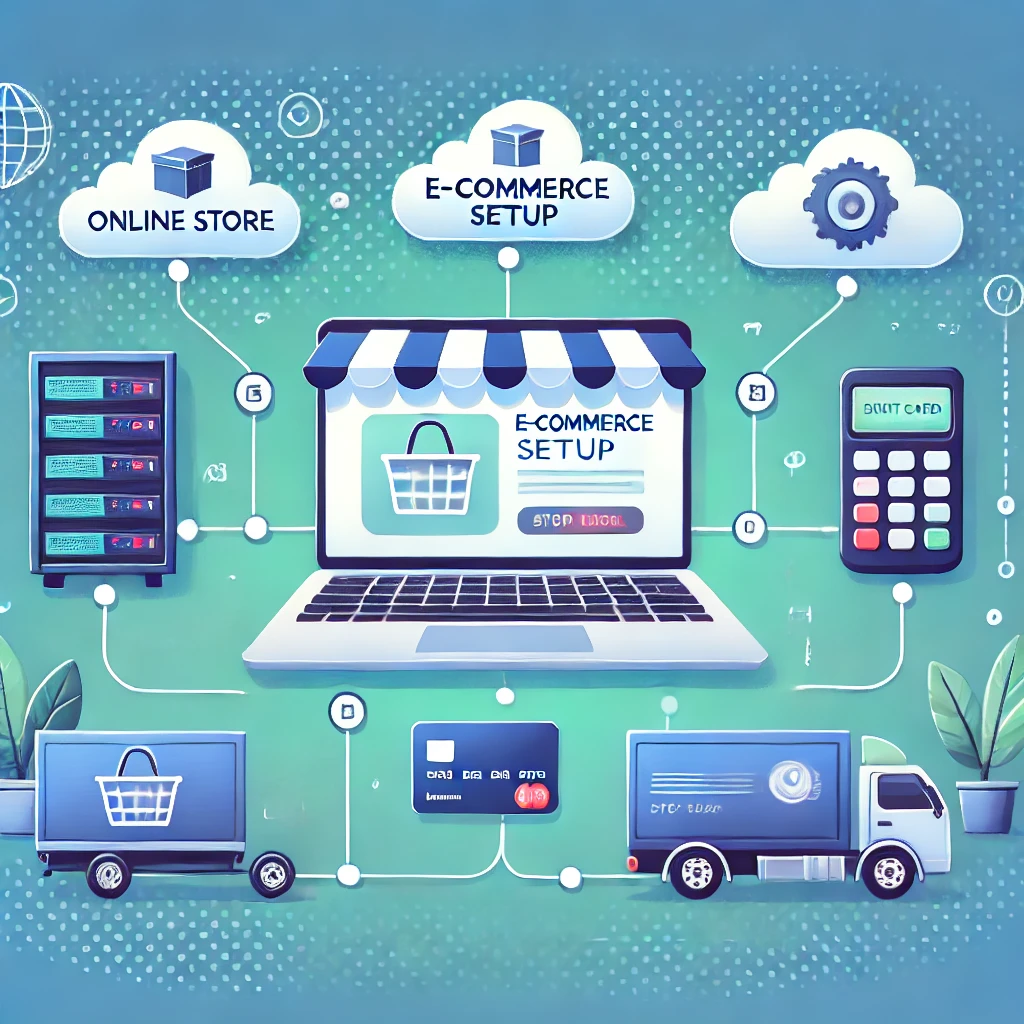Introduction
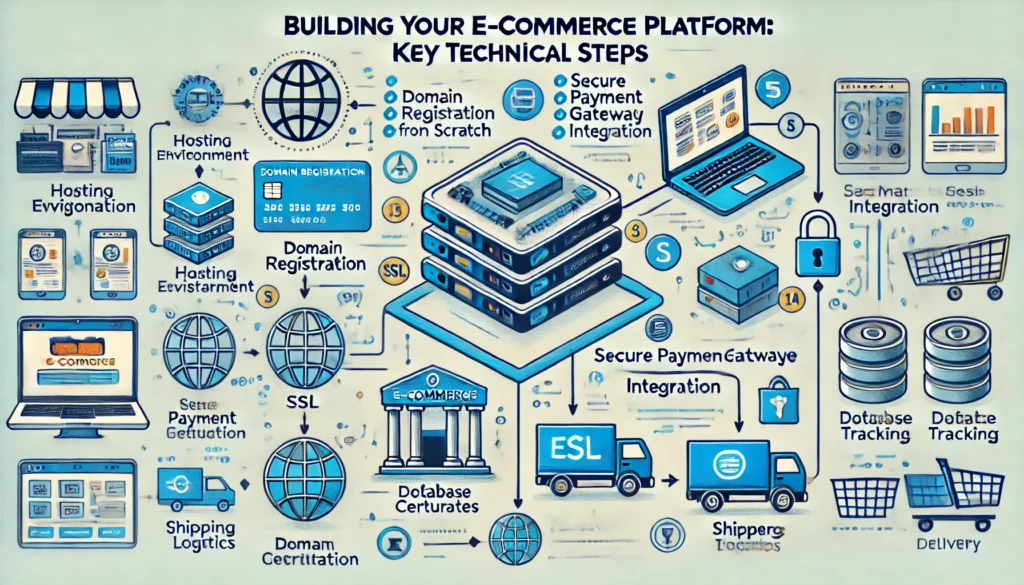
Creating an e-commerce platform from scratch may feel like a daunting proposition, especially when you consider all the moving pieces required to run a successful online store. The technical components alone—covering everything from server hosting to integrating payment gateways and managing shipping logistics—can appear overwhelming. Yet, despite these complexities, the journey becomes far more manageable once the fundamental steps are clearly laid out. This post aims to unravel the complexity by diving deep into the core technical aspects of launching an e-commerce platform. We will begin with the hosting environment as the bedrock, then explore how payment gateways can be seamlessly connected, and finally address shipping considerations that ensure your products reach customers securely and efficiently. Along the way, you will find practical insights into domain registration, SSL certificates, website design considerations, and the importance of a well-integrated backend system.
Anyone with the necessary determination can assemble the puzzle pieces into a thriving online store. The process might involve periods of trial and error, especially if you are tackling everything on your own. However, once you have an overview of each stage, you can begin to strategize the best approach for your specific goals. This includes determining what platform suits your technical expertise, how you will accept payments without jeopardizing customer data, and whether you want to partner with established carriers or integrate specialized logistics solutions for shipping. By making well-informed decisions at each juncture, you will steer your new e-commerce store toward a stable and secure launch.
It is important to remember that an e-commerce platform is not just about a shopping cart and checkout functionality. Hidden beneath the user interface is a finely tuned network of databases, security protocols, and third-party integrations that can either enhance or hinder the user’s experience. Moreover, as digital threats evolve, you will need to remain vigilant in terms of security. Even your choice of hosting can influence how well your site stands up to traffic spikes, data breaches, and other unforeseen challenges. The outcome you want is a reliable, scalable store that instills trust in visitors and evolves alongside your business ambitions.
Whether you are a small business owner looking to transition from brick-and-mortar to online sales or an entrepreneur eager to jump straight into the digital marketplace, understanding each step of your store’s technical setup is the first stride toward success. From registering your domain name and installing Secure Sockets Layer (SSL) certificates to selecting the right payment providers and shipping carriers, every part of the puzzle needs to fit snugly. When these elements are in harmony, your audience will experience a seamless journey: discovering products, placing items in the cart, paying securely, and receiving timely deliveries.
If at any point in this process you are uncertain about how to choose the best resources or implement the correct integrations, consider bringing in professional help. At Vadimages, our team specializes in custom web development and can assist you in overcoming technical hurdles, from the initial stages of planning your store’s infrastructure to integrating specialized features that help your business stand out. We understand that every project has its own distinct requirements, and we tailor our services to meet your vision, ensuring that your e-commerce platform is both technically sound and appealing to your target audience.
Hosting: The Foundation of Your Online Store
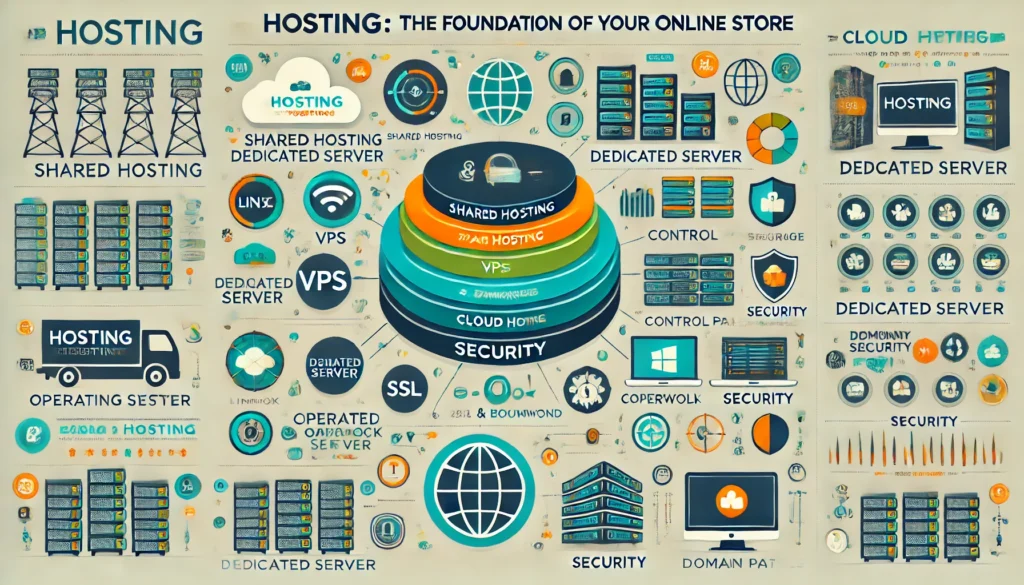
Selecting the right hosting setup is more than just a matter of finding a place to store your files on the internet. In fact, it is the architectural backbone that dictates your website’s speed, reliability, and security. When you begin this journey, you will likely weigh options like shared hosting, virtual private servers (VPS), dedicated hosting, or cloud-based solutions. Your choice should align with your store’s size, expected traffic, and long-term scalability. While a small start-up might be perfectly fine with shared hosting at first, any substantial surge in visitors could strain the server resources and degrade performance. A VPS or dedicated server provides more control and stability, but can also require a greater level of technical expertise.
You will also need to consider the operating system environment (Linux or Windows), as well as the control panel you prefer to manage server configurations. Many individuals gravitate toward popular control panels that offer user-friendly interfaces for tasks such as domain name system (DNS) configuration, database management, and email settings. These tools can help you quickly spin up resources, install secure sockets layer certificates, and keep track of your site’s resource usage.
Once you have decided on a hosting provider and environment, pay close attention to the bandwidth and storage space you are allotted. An online store typically hosts multiple product images, and if you anticipate video content or high-resolution media, your storage needs may escalate more quickly than you expect. Your site’s bandwidth usage will similarly rise when your store experiences surges in traffic or when you have large volumes of media being served.
Security is another crucial dimension. E-commerce sites are prime targets for cyber threats, particularly phishing attacks, data breaches, and distributed denial-of-service (DDoS) intrusions. Because of this, a hosting environment that offers robust firewalls, malware scanning, and automated backups will protect not only your store’s data, but your customers’ payment details as well. An SSL certificate is an absolute necessity to encrypt data transmission and cultivate trust among potential buyers. Browsers now often highlight websites lacking SSL certificates with security warnings, which can immediately discourage potential customers from proceeding.
Apart from the server environment and SSL integration, you should also set up your domain. Acquiring a custom domain name that reflects your brand identity is pivotal. The domain name becomes part of how people remember and relate to your store, so it is essential that it resonates with your business’s core values and product offerings. After registering your domain, you will configure the DNS settings so the domain directs users to your hosting server’s IP address. This process may involve updating the domain’s name servers to point to your hosting provider. Although it can be completed in a short time, it occasionally takes a few hours or up to a couple of days for these changes to propagate globally.
A lesser-known but equally critical step is to ensure your hosting provider supports your choice of e-commerce software. If you plan on using a content management system (CMS) like WordPress combined with an e-commerce plugin, confirm that your server environment is optimized for that technology stack. Alternatively, if you opt for a dedicated e-commerce platform that runs on a specific software environment, your hosting plan should provide the required version of PHP, MySQL or other databases, and enough resources to run everything smoothly.
When you have a strong hosting foundation, the rest of your setup becomes smoother. Pages load quickly, user sessions remain stable, and essential processes such as checkout and payment authorization occur without frustrating delays or server errors. By investing time and resources in a robust hosting environment, you empower your store to grow securely and handle spikes in traffic during high-demand periods such as holidays, sales, or product launches.
Payment Gateways: Enabling Seamless Transactions
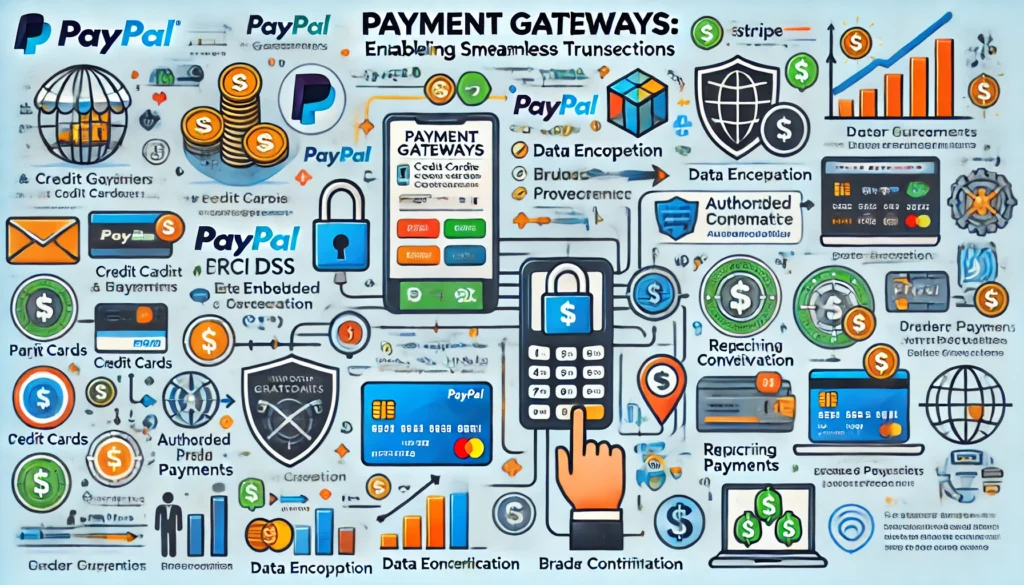
Offering a secure and frictionless payment experience significantly influences how prospective customers perceive your store’s legitimacy and reliability. Trust is everything in an e-commerce environment, and a cumbersome or suspicious-looking checkout process can drive users away at the final step. This is why choosing the right payment gateways and integrating them properly can make a dramatic difference.
Payment gateways act as the technical bridge between your e-commerce platform and financial institutions. They handle tasks such as data encryption, communication with banks, and authorization of transactions. Popular choices include services like PayPal, Stripe, Authorize.net, and various localized payment solutions depending on your region. Each payment gateway comes with its own fee structure, supported currencies, and transaction policies, so it is essential to compare what they offer before making a commitment.
Implementing multiple gateways may be beneficial for some stores, especially if you want to support local payment methods for international customers or accommodate alternative payment types such as digital wallets and cryptocurrencies. However, integration complexity can increase with each additional gateway. As you set up your payment system, confirm that your chosen gateways comply with Payment Card Industry Data Security Standard (PCI DSS) requirements. Compliance not only shields your business from data breaches but also reassures customers that you take their financial data seriously.
When implementing gateway functionality, you should also consider the user interface design for your checkout. Simplifying the checkout flow and reducing the number of pages or steps can significantly enhance the user experience. Make sure that the transition from your store to the gateway (if the user is redirected externally to complete payment) is clear and maintains brand continuity. Some gateways allow you to embed payment forms directly on your site, preventing users from navigating away. This can be advantageous but may require advanced development work to ensure the form is secure.
Error handling is another vital consideration. If a payment fails due to insufficient funds, incorrect card details, or connectivity problems, your store should gracefully communicate the issue and offer a quick way to retry or use a different payment method. Logging these errors on the backend is also beneficial for troubleshooting.
After a transaction is approved, your e-commerce system should generate an order confirmation, typically sent to both the customer’s email and your store’s order management dashboard. The confirmation includes details such as the order number, itemized list of products purchased, shipping address, and the total amount paid. This behind-the-scenes handshake between your store database and the payment gateway fosters transparency and helps you maintain accurate sales data for accounting and reporting.
In the quest to streamline transactions, you might also enable subscription or recurring billing features if you sell products or services that rely on membership models. Such features require specialized gateway support to manage recurring payments securely and handle issues like subscription renewals, upgrades, or cancellations. As your store expands, the ability to adapt your payment infrastructure to new business models can be a differentiating factor.
Above all, do not underestimate the power of analytics in optimizing your payment process. Monitoring metrics like abandoned carts, conversion rates, and average transaction values can guide you in making improvements, whether that involves refining the checkout layout or adding more localized payment options for global users. By fine-tuning how payments are handled, you enhance not just your bottom line but also the overall reputation of your brand.
Shipping: Delivering on Customer Expectations
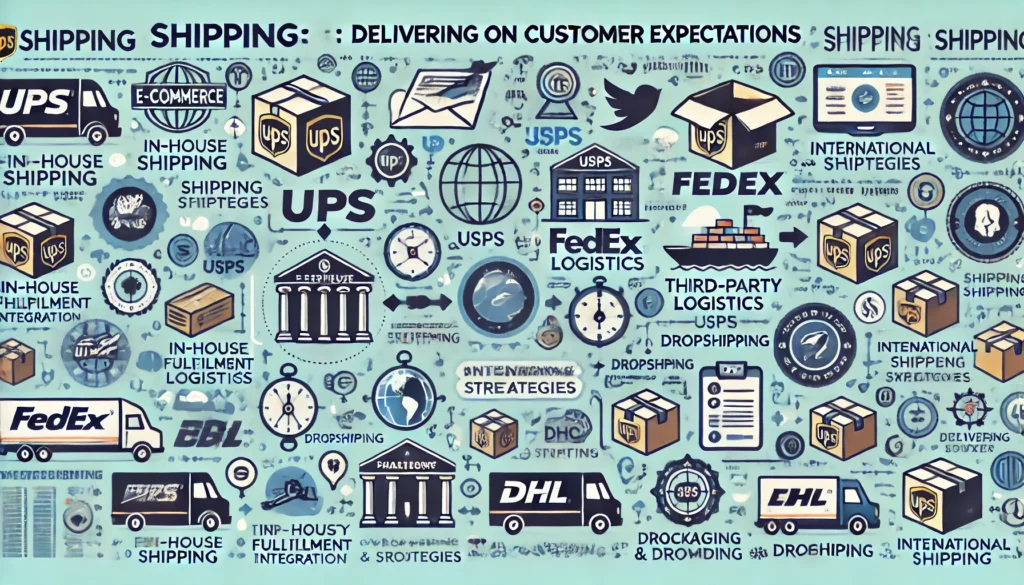
While digital transactions occur in a matter of seconds, physical goods must still make their way from your location (or your suppliers) to the customer’s hands. This logistic path can be surprisingly complex, encompassing shipping carriers, order tracking, fulfillment centers, and even tax or duty calculations for international shipments. Yet shipping is an indispensable pillar of the user experience, often forming the critical last step that determines whether the customer returns for future purchases.
The first decision often revolves around which shipping carriers and services to offer. Common choices might include major carriers such as UPS, FedEx, USPS, or DHL, but smaller regional services may provide more favorable rates or specialized handling. Many e-commerce platforms feature integrations or extensions that automatically calculate shipping costs during checkout based on the customer’s location, the weight and dimensions of the package, and the chosen shipping method. Ensuring these calculations are accurate is paramount, as unexpected shipping costs can lead to cart abandonment.
Next, consider your fulfillment strategy. If you manage inventory in-house, you will need to organize a packing and shipping process that can keep up with orders, maintain inventory accuracy, and provide customers with timely tracking numbers. Alternatively, partnering with a fulfillment center or dropshipping supplier can reduce the physical handling on your end. In those scenarios, your store must sync seamlessly with the fulfillment partner’s systems so that orders automatically transfer to their workflow, and shipping updates feed back to your store for the customer’s reference.
International shipping adds layers of complexity in terms of customs forms, tax regulations, and currency conversions. Some e-commerce solutions allow you to display taxes and duties at checkout, letting customers see the full cost of their purchase upfront and reducing unpleasant surprises upon delivery. However, implementing these features can require specialized plugins or API connections to real-time tax calculation services, depending on the countries you plan to serve.
Shipping speed also plays a significant role in customer satisfaction. Today’s online shopper is often accustomed to rapid delivery times. If you can provide expedited shipping or even same-day delivery for local areas, you can set yourself apart from competitors. This might necessitate relationships with on-demand courier services or local delivery drivers who can handle time-sensitive shipments. Additionally, you can allow customers to choose their preferred delivery speeds at checkout, empowering them to align costs with urgency.
Throughout this process, keep in mind that a transparent and streamlined shipping procedure wins loyalty. Make sure your store’s front-end communications—on product pages and in the shopping cart—clearly state shipping timelines, possible delays, and any relevant restrictions on items that require special handling. Offering an order tracking feature where customers can click a link or input their order details to see real-time status updates can alleviate a great deal of post-purchase anxiety. Many shipping carriers provide application programming interfaces (APIs) to plug into your e-commerce system, automating this tracking function directly on your website.
Even packaging itself can be a subtle extension of your brand. Unique, sturdy, and eco-friendly packaging contributes to the overall user experience and can inspire positive reviews and social media shares. Since shipping is one of the final points of direct contact with customers, it presents an opportunity to reinforce your brand identity and cultivate repeat business.
When all these components—hosting, payment gateways, and shipping—are integrated properly, you create a cohesive e-commerce ecosystem. However, the technology must be supported by careful planning and professional oversight to handle the myriad variables that come with selling products online. For many small or medium-sized enterprises, navigating these details can be intimidating, which is why consulting with an experienced web development team can expedite success.
If you are seeking expert guidance in setting up your e-commerce platform from scratch or require custom integrations to refine an existing store, look no further than Vadimages. Our seasoned developers can evaluate your requirements, craft a robust hosting environment, seamlessly implement trusted payment gateways, and configure shipping processes tailored to your operations. We pride ourselves on delivering solutions that blend aesthetic appeal with cutting-edge functionality, ensuring your customers enjoy every moment they spend on your site. We believe in forging long-term partnerships that help your online business thrive in a competitive marketplace.
Below is a simple conceptual illustration of how the components in an e-commerce system communicate. This graphic highlights the flow of information between the user’s browser, your hosting server, the payment gateway, and the shipping provider, offering a high-level perspective on how data travels from point to point:
[User's Browser]
|
| (1) Browses Website
v
[Hosting Server]
|
| (2) Processes Orders
v
[Payment Gateway <----> Bank]
|
| (3) Confirms Payment
v
[Shipping Provider]
|
| (4) Updates Tracking
v
[User's Browser](Alt text: Diagram showing the user accessing the online store on a hosting server, which communicates with payment gateways and shipping providers to complete the transaction and update order status.)
By thoroughly understanding these technical steps—from picking an optimal hosting solution to seamlessly managing payments and deliveries—you will be well-equipped to face the challenges inherent in e-commerce. The ultimate goal is to craft a smooth and trustworthy environment for your customers, one where they can confidently browse products, place orders, and receive their items without hassles. Doing so requires attention to detail and a willingness to adapt as market trends and customer expectations shift. Yet the rewards are substantial: higher conversion rates, satisfied buyers, and a brand that stands out in a competitive digital landscape.
Your journey does not end when you finalize your shipping strategy or integrate your preferred payment gateways. Each new feature, marketing campaign, or product line might prompt adjustments to your website’s infrastructure. The best e-commerce platforms remain dynamic, improving the user experience through data-driven insights and employing advanced practices like personalized product recommendations, automated email campaigns, and even interactive shopping experiences like augmented reality previews.
In essence, launching an online store should be viewed as an ongoing process that melds technology, marketing, and strategic thinking. The advantage of modern e-commerce solutions is that they provide robust tools and integrations to help you grow. By addressing the fundamental technical steps laid out in this post, you set a strong foundation on which you can layer advanced features and offer a refined, delightful customer journey.
Should you decide to partner with professionals who can take the guesswork out of the process, remember that Vadimages is here to help. We can demystify the complexities of hosting, guide you through the myriad payment gateway options, and ensure your shipping methods align with your logistics and brand values. From the moment a visitor clicks on your domain to the day they receive their shipment, our goal is to shape every interaction in a way that forges a lasting impression.
By grasping these technical essentials and staying adaptable, you are on track to building a successful online store that resonates with your audience. Whether you are bootstrapping or seeking to scale an established operation, let these guidelines serve as your map. Embrace the challenges, stay focused on quality, and your e-commerce platform will stand out in an ever-crowded digital marketplace.
